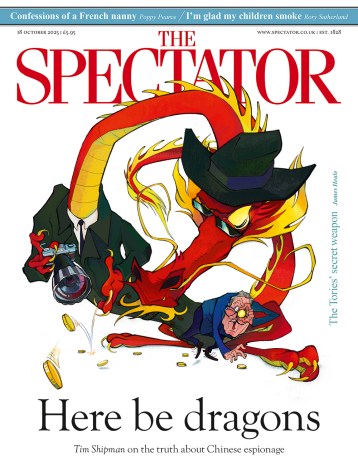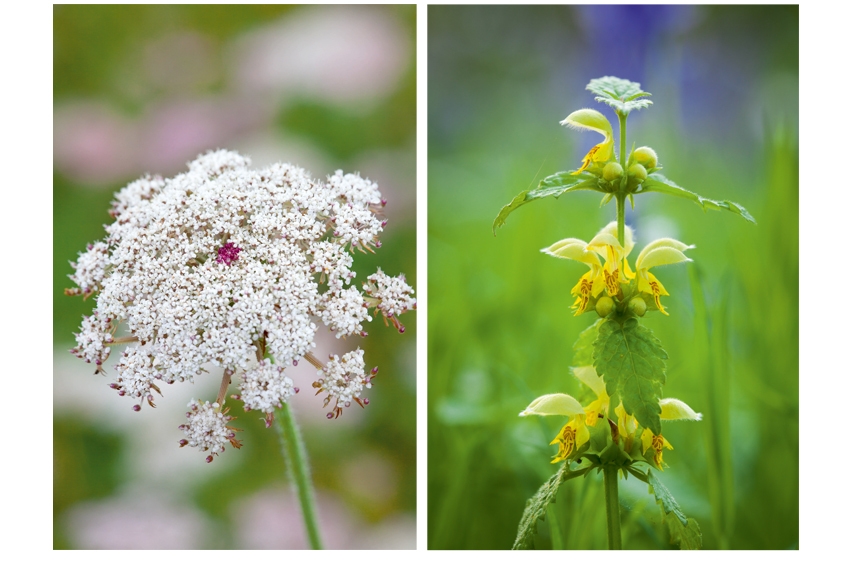Sarah Raven comes of a botanising family. Her father John, a Cambridge classics don, travelled all over the British Isles studying wildflowers. Like his own father, Charles Raven, he was a gifted watercolourist, and between them they drew almost every plant in the British flora. Sarah still possesses 18 volumes of their watercolours.
Nevertheless, to illustrate her huge, learned and comprehensive book of 500 wildflowers, she chose a photographer, Jonathan Buckley. This was partly because she had written with him before on other books, but mainly because they could travel and work together. They visited over 100 sites to track down the specimens, often 20 or 30 in one favoured place, where he would ‘lie on his stomach for hours at a stretch photographing them’. They dropped the usual botanical approach of standing above the plant to snap it, and instead he took the pictures from the flower’s own level. This has produced a large number of highly informative close-ups. The corncockle, for instance (Agrostemma githago), and the wild carrot (Daucus carota) have never been better photographed.
In addition, because Raven has chosen to classify her presentation under eight types of scenery (wood; lane, wall and hedge; meadow; chalk down and limestone dale; arable and wasteland; water and wetlands; heath, moor and mountain; coast), Buckley has taken a large number of photos of the background against which the flowers grow. These are of spectacular quality and constitute the chief artistic merit of the book. Indeed, reproduced with great fidelity by the publishers, Bloomsbury, they are among the best nature photographs I have ever seen, though, presented as double-page spreads, they add enormously to the size of the book, which is one of the weightiest I have ever handled, and has to be read sitting at a table.
Nevertheless, I still prefer manuals like this to be illustrated by line-and-watercolour drawings. As Dr Brinsley Burbridge says in his introduction to the catalogue of the magnificent Shirley Sherwood collection, ‘The superiority of identification guides which use paintings over those illustrated by photographs is immediately obvious.’ The fact is that a skilled artist ‘working together with a botanist, can show all the significant features which aid identification’, and this is ‘an insurmountable advantage’.
Still this is a valuable work and admirably organised. Each plant has a separate entry and picture. There are glossaries of family names, species names and botanical terms and, most important, four separate indexes by petal colour, common name, Latin name and family name. The bibliography is up to date and there is a useful list of botanical organisations.
Raven has a highly personal approach to wildflowers which I find attractive. She admits she finds dog’s mercury and dandelions ‘boring’, but adds, ‘You will find their more intriguing relatives, hawkbits, just round the corner, some pale and modest, others a bit racy.’ She calls Indian balsam, butterfly-bush and Japanese knotweed ‘thugs … all shockingly brutal in their way’ but nonetheless ‘interesting’. She sees examining wildflowers as like going to a party: the fact that you know half the guests makes it more fun, and encourages the appetite to get to know more. She knows which plants are edible, like the red dead nettle (raw or stir-fried) and offers advice: ‘leaves still fresh but of maximum size, in late spring or early summer’.
She also gives useful information on plants suitable to decorate a room, like sun spurge: ‘if you take care to keep its sap out of your eyes it makes a marvellous cut flower with a faint honey scent — plunge its stems into boiling water for 20 seconds to seal in the poisonous sap, and make them last up to a week in water.’ She finds hemp-agrimony ‘grimy’ by the end of summer. On the other hand bog-myrtle is excellent for repelling flies and midges and for flavouring beer. She loves butterfly-orchids and praises English stonecrop as an ‘excellent plant for green roots’, and wild cabbage is ‘a noble beast’ like ‘an ancient dinosaur’. In short, an opinionated and highly readable book.






Comments